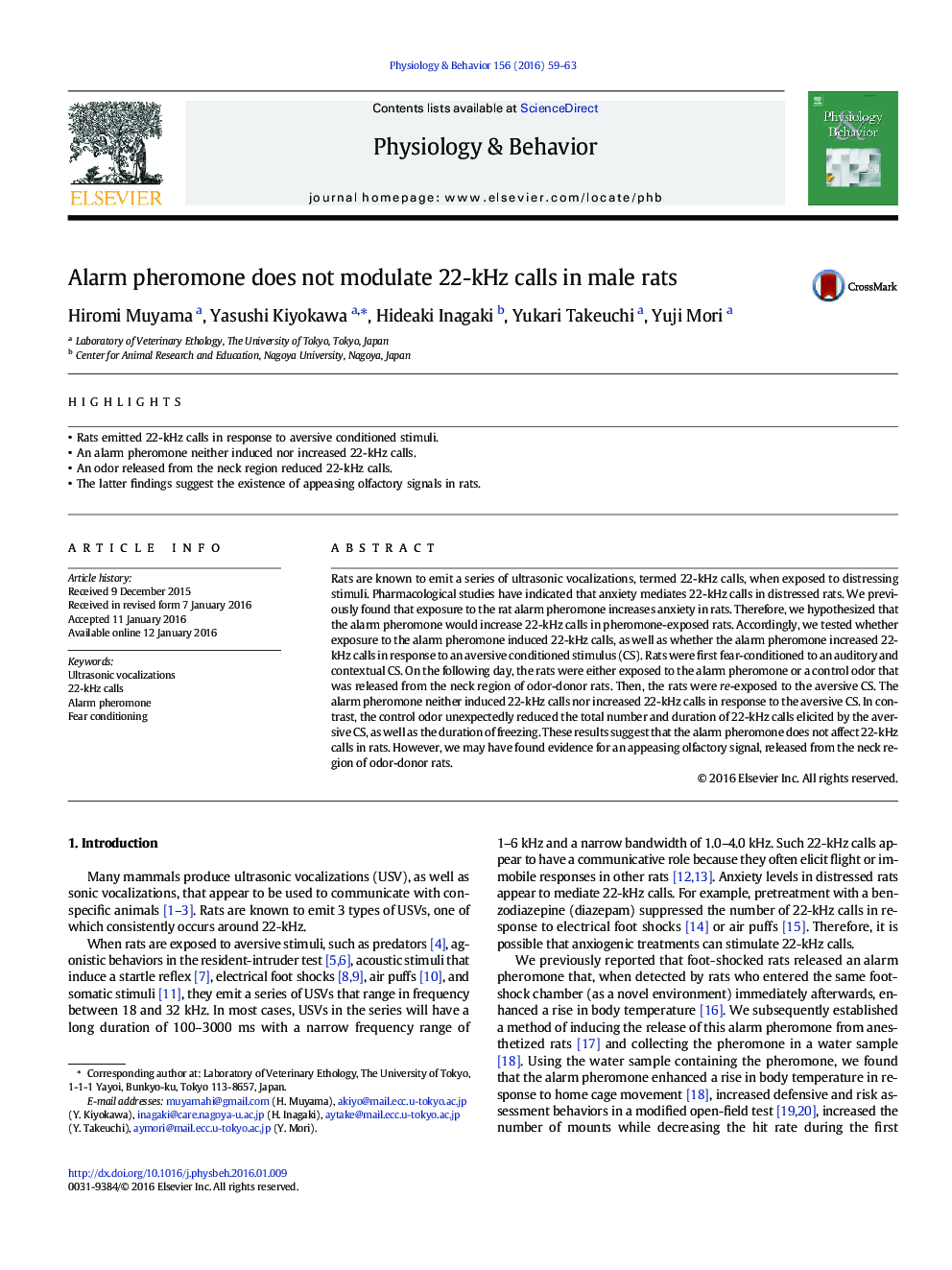| کد مقاله | کد نشریه | سال انتشار | مقاله انگلیسی | نسخه تمام متن |
|---|---|---|---|---|
| 5922980 | 1571162 | 2016 | 5 صفحه PDF | دانلود رایگان |
- Rats emitted 22-kHz calls in response to aversive conditioned stimuli.
- An alarm pheromone neither induced nor increased 22-kHz calls.
- An odor released from the neck region reduced 22-kHz calls.
- The latter findings suggest the existence of appeasing olfactory signals in rats.
Rats are known to emit a series of ultrasonic vocalizations, termed 22-kHz calls, when exposed to distressing stimuli. Pharmacological studies have indicated that anxiety mediates 22-kHz calls in distressed rats. We previously found that exposure to the rat alarm pheromone increases anxiety in rats. Therefore, we hypothesized that the alarm pheromone would increase 22-kHz calls in pheromone-exposed rats. Accordingly, we tested whether exposure to the alarm pheromone induced 22-kHz calls, as well as whether the alarm pheromone increased 22-kHz calls in response to an aversive conditioned stimulus (CS). Rats were first fear-conditioned to an auditory and contextual CS. On the following day, the rats were either exposed to the alarm pheromone or a control odor that was released from the neck region of odor-donor rats. Then, the rats were re-exposed to the aversive CS. The alarm pheromone neither induced 22-kHz calls nor increased 22-kHz calls in response to the aversive CS. In contrast, the control odor unexpectedly reduced the total number and duration of 22-kHz calls elicited by the aversive CS, as well as the duration of freezing. These results suggest that the alarm pheromone does not affect 22-kHz calls in rats. However, we may have found evidence for an appeasing olfactory signal, released from the neck region of odor-donor rats.
Journal: Physiology & Behavior - Volume 156, 15 March 2016, Pages 59-63
